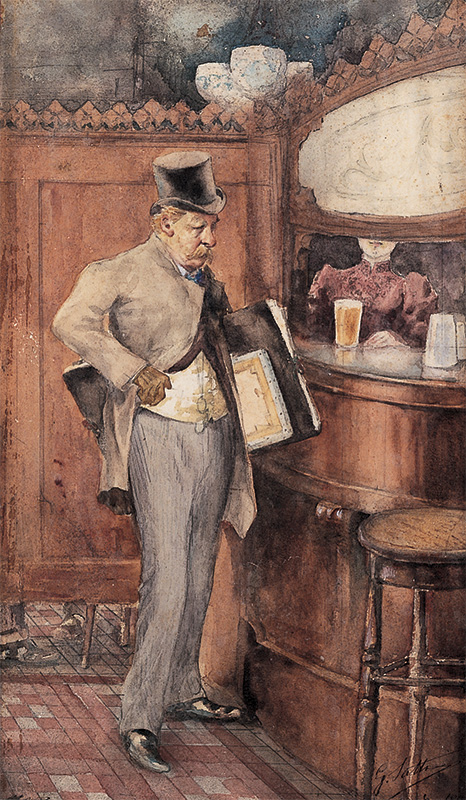Giacinto Satta, Artista al bar, late 19th century, watercolor on paper, MAN
Giacinto Satta was a multifaceted and highly significant figure in Sardinian culture between the 19th and 20th centuries. A painter, journalist, writer, illustrator, and politician, he was one of the first examples of a modern Sardinian artist — able to combine his island roots with a European openness.
After studying in Nuoro and Sassari, he moved to Rome, where he earned a degree in law but soon became involved in artistic and literary circles. Later, he lived in Paris as a correspondent, collaborating with several French and English newspapers. His Parisian experience proved decisive: it brought him closer to Impressionism and to the bohemian atmosphere that deeply influenced his painting.
Returning to Sardinia in 1893, he taught French in Nuoro, where he formed friendships with Grazia Deledda, Sebastiano Satta, and Antonio Ballero. He also served as mayor of Nuoro in 1900 but soon left politics to devote himself entirely to art and writing.
A self-taught artist and tireless traveler, Satta portrayed Sardinia with a realistic eye, far removed from folkloric idealization. His works combine verismo (realism) with an impressionist sensibility, attentive to light and to the emotions of everyday life.
Among his best-known works is the watercolor Artista al bar depicting an elegant man at a café counter — a symbol of the modern, contemplative artist. The piece, rendered in soft and luminous tones, reflects French influence and Satta’s poetic vision: observation of reality, introspection, and a taste for narrative.
Considered a free spirit and nonconformist, he was described as a bohemian and the first Sardinian artist to bring the Impressionist message to the island. Through his artistic, literary, and journalistic activity, Satta helped renew Sardinian culture, opening it to dialogue with modern European thought.

